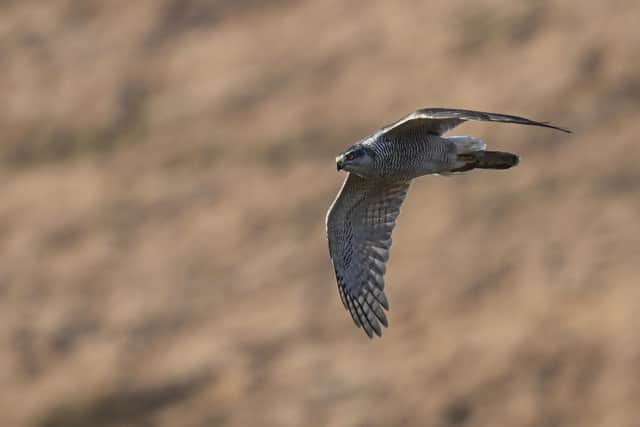Illegal killings force end to Peak District birds of prey conservation project
and live on Freeview channel 276
The Peak District Bird of Prey Initiative was set up by the national park authority (PDNPA) in 2011 in the hope of returning populations of raptors – such as peregrines, goshawks, short-eared owls and merlins – to 1990s levels and re-establishing the hen harrier as a regularly breeding part of the ecosystem.
The partnership brought together representatives for landowners and gamekeepers, conservation groups, the police and other bodies, but PDNPA says that disagreement among those stakeholders and continued cases of bird persecution mean there is now no prospect of ‘being able to deliver meaningful change.’
Advertisement
Hide AdAdvertisement
Hide AdThe RSPB left the initiative in 2018, citing ongoing incidents of illegal shooting, trapping and poisoning, and it appears other partners have now reached the same conclusion, particularly those experts responsible for surveying populations each year.


Chief executive Phil Mulligan said: “It is with regret that we are closing the initiative after more than a decade of endeavours to safeguard our charismatic birds of prey that have a rightful place here in the national park.
“Featuring at the very top of local ecosystems, these species like the hen harrier, peregrine and goshawk should be a flagship for landscapes and habitats at the heart of nature’s recovery.
“The fact that the work of the initiative has failed to reflect those target populations of some 30 years ago remains a cause for real concern, and it is without question that illegal persecution targeted towards some of these species is one factor behind this stuttering progress.”
Advertisement
Hide AdAdvertisement
Hide AdHe added: “I would like to extend my thanks to those who have put their time, energies and passion into the painstaking study, sharing of information and analysis of our raptor populations during the initiative’s existence, but we must now look at alternative ways to ensure our birds of prey have a future in the Peak District – free from the risk of illegal actions.”
Over the lifespan of the initiative, there have been increasing sightings of red kits and ospreys in the area but populations of many of the key species have not increased at the rates initially hoped for with some seeing no improvement at all. While hen harriers have returned, successful breeding currently remains limited.
Although progress has been seen with some species including the goshawk, and with the initiative acknowledging that other species’ population changes appear to be mirroring those of wider UK trends, direct persecution has remained a factor alongside the initiative’s decade-long existence.
Incidents of shooting, poisoning, trapping, nest destruction or the disappearance of satellite-tracked birds active within the Peak District have featured in every year of the initiative’s monitoring.
Advertisement
Hide AdAdvertisement
Hide AdPDNPA now believes that until these illegal activities are tackled, sustainable progress towards population increases in key species will not be possible.
The authority has confirmed that it will continue working with a range of local stakeholders on priority actions for the future of birds of prey in the Peak District and potential activities will be outlined as part of its ‘Nature Recovery Plan’ due to be released this summer.